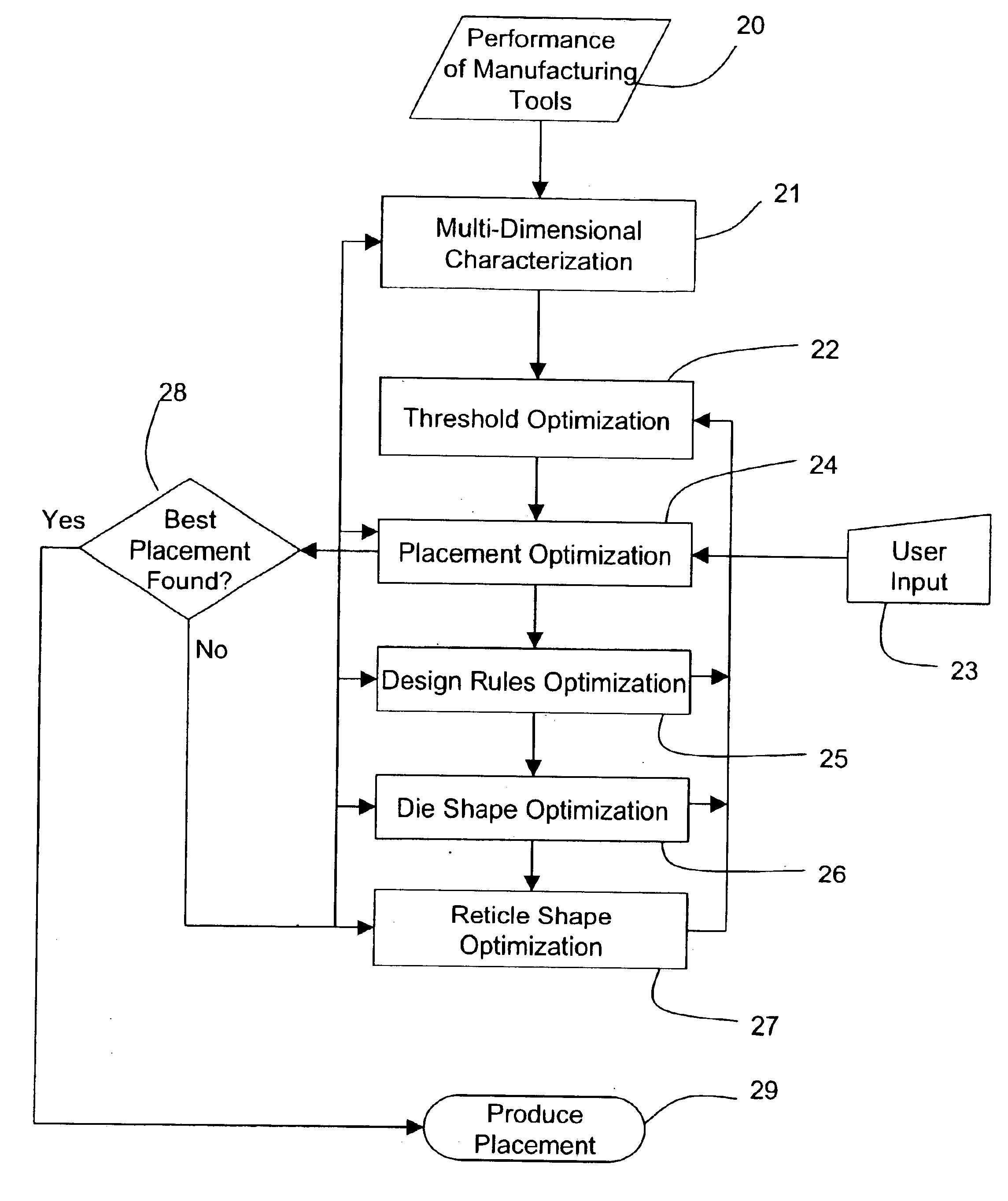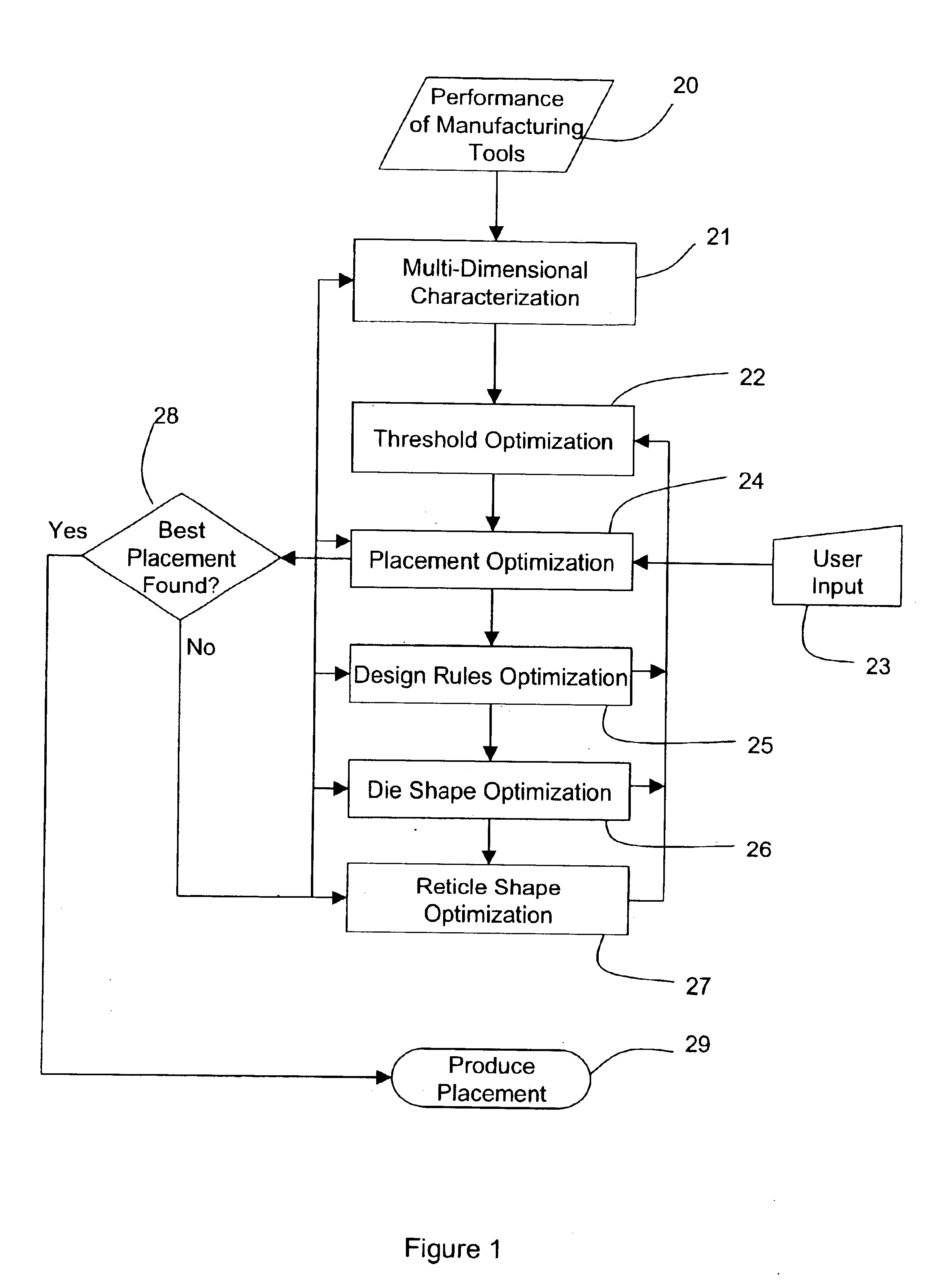Optimization of die placement on wafers
a technology of dies and wafers, applied in semiconductor/solid-state device testing/measurement, instruments, photomechanical equipment, etc., can solve the problems of large increases in fabrication costs, increase in equipment costs, and reduce the yield of dies placed on the wafers
- Summary
- Abstract
- Description
- Claims
- Application Information
AI Technical Summary
Benefits of technology
Problems solved by technology
Method used
Image
Examples
Embodiment Construction
Detailed descriptions of preferred embodiments of the invention are provided herein. It is to be understood, however, that the present invention may be embodied in various forms. Therefore, specific details disclosed herein are not to be interpreted as limiting, but rather as a basis for the claims below and as a representative basis for teaching one skilled in the art to employ the present invention in virtually any appropriately detailed system, structure or manner.
FIG. 1 shows a flow chart depicting an embodiment of the inventive process. The process begins in Step (20) with characterization of manufacturing tools. Such manufacturing tools include any or all processes and equipment used on a particular wafer of interest. In particular, Step (20) may involve characterizing different FAB equipment and processes in terms of their impact on, for example, yield, product performance, throughput, manufacturing and test, defect density analysis results, and reliability. This may be done,...
PUM
| Property | Measurement | Unit |
|---|---|---|
| yield threshold number | aaaaa | aaaaa |
| yield threshold | aaaaa | aaaaa |
| aspect ratios | aaaaa | aaaaa |
Abstract
Description
Claims
Application Information
 Login to View More
Login to View More - R&D
- Intellectual Property
- Life Sciences
- Materials
- Tech Scout
- Unparalleled Data Quality
- Higher Quality Content
- 60% Fewer Hallucinations
Browse by: Latest US Patents, China's latest patents, Technical Efficacy Thesaurus, Application Domain, Technology Topic, Popular Technical Reports.
© 2025 PatSnap. All rights reserved.Legal|Privacy policy|Modern Slavery Act Transparency Statement|Sitemap|About US| Contact US: help@patsnap.com


